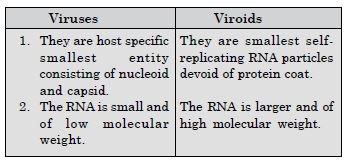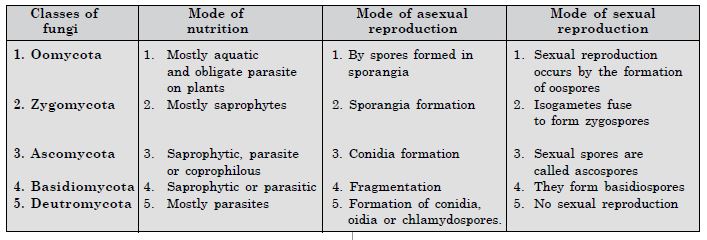Free NCERT Solutions are available on the Aasoka platform for students to kick-start their exam preparation. The top study material is constantly being updated by highly experienced subject matter experts as per the latest CBSE syllabus. NCERT Solutions for Class 11 provides the most accurate solutions and covers crucial concepts so that students do not miss out on any important topics. You can study, learn, and understand the concept at your own pace to enhance your overall performance.
“Biological Classification” chapter of Class 11 Biology explains the characteristics of Fungi, Kingdoms Monera, and Protista of the Whittaker system of classification; Lichens, Viruses, Kingdom Plantae, five kingdom classification, Kingdom Animalia, Viroids, and much more.
Question 1:
State two economically important uses of :
- heterotrophic bacteria
- archaebacteria.
Answer:
Uses of heterotrophic bacteria :
- They are helpful in making curd from milk.
- They are involved in production of antibiotics.
- They fix nitrogen in roots of leguminous plants.
Uses of archaebacteria :
- Methanogens produce biogas (methane) from dung of several ruminants such as cows, buffaloes.
- Methanogens take part in the digestion of food in the stomach of ruminants.
Question 2:
What is the nature of cell wall of diatoms ?
Answer:
Cell wall of diatoms. In diatoms, the cell walls form two thin overlapping shells which fit into each other as a soap box. The upper half is called epitheca and lower half is hypotheca. The walls are embedded with silica and thus the walls are indestructible.
Question 3:
Find out what do the terms algal bloom and red tides signify ?
Answer:
Algal bloom. Rapid blooming of algae in water bodies due to plenty of nitrates in the surface run off the fields and phosphates of detergents is termed algal bloom.
Red tide. Occasionally members of dinoflagellates like Gonyaulax accumulate in large numbers in some parts of sea, colouring the water red and are responsible for red tide. Toxin released by such large numbers may be dangerous for marine animals such as fishes.
Question 4:
How are viroids different from viruses ?
Answer:
Differences between viroids and viruses :
Question 5:
Plants are autotrophic. Can you think of some plants that are partially heterotrophic ?
Answer:
Plants are green in colour and autotrophic. They prepare their own food from raw materials in the presence of sunlight and chlorophyll.
There are certain insectivorous plants which are partially heterotrophic in nature :
1. Drosera 2. Utricularia 3. Nepenthes
Question 6:
What do the terms phycobiont and mycobiont signify ?
Answer:
Phycobiont and mycobiont. A lichen is structurally organised entity consisting of the permanent association of a fungus and an alga. The fungal component of a lichen is called mycobiont and the algal component is called phycobiont. Both mycobiont and phycobiont are associated in symbiotic union in which the fungus is more predominant and alga is subordinate partner. The fungus provides the structural covering that protects alga from unfavourable conditions, i.e. drought, heat, etc. It also traps moisture from the atmosphere and anchors the lichens to a rock, tree bark, leaves and other similar supports. The alga prepares organic food by the process of photosynthesis from carbon dioxide.
Question 7:
Give a comparative account of classes of kingdom fungi under the following :
- mode of nutrition
- mode of reproduction
Answer:
Question 8:
Give a brief account of viruses with respect to their structure and nature of genetic material. Also name four common viral diseases.
Answer:
Structure of Virus :
Chemical structure and composition
Viruses have a very simple structure. A virus is made of nucleic acid core and protein coat called capsid which surrounds the core. A fully assembled particle, i.e. a virion, is capable of infecting the host.
1. The nucleic acid. A virion always contains only a single kind of nucleic acid i.e., either DNA or RNA. The nucleic acid may occur as single or double strands. Plant viruses contain only single or double stranded DNA or single or double stranded RNA. Bacterial viruses (bacteriophages) contain single or double stranded DNA or single stranded RNA.
The infection property of a virion is due to its nucleic acid. A host cell can synthesize complete virion if only free viral nucleic acid is injected within the cytoplasm of a living host cell.
Genetic material :
- Deoxyribo virus : Viruses having DNA as genetic material.
- Riboviruses : Viruses having single stranded RNA as genetic material.
- Rheoviruses : Viruses having double stranded RNA as genetic material.
- Retro virus : These are RNA/DNA viruses having reverse transciptase enzyme.
2. Capsid or the protein coat. The protein coat is called capsid. It is made of many identical protein sub-units called capsomeres. The capsomeres are composed of either one or several types of proteins. Host specificity of viruses is due to the proteins of the capsid. In a virus particle, the capsomeres are arranged in a very symmetrical manner and give a specific shape to a particular virus.
Viral Diseases of man :
1. Influenza 2. Chicken pox
3. Rabies 4. AIDS.
Question 9:
Organise a discussion in your class on the topic ‘‘Are viruses living or non-living ?’’
Answer:
Arrange a discussion with the help of your teacher.


